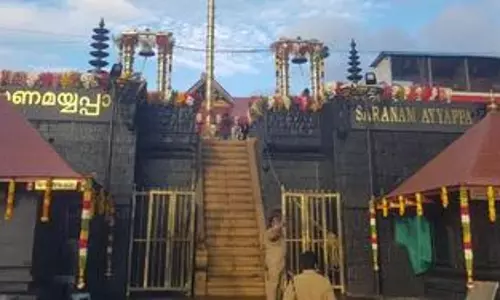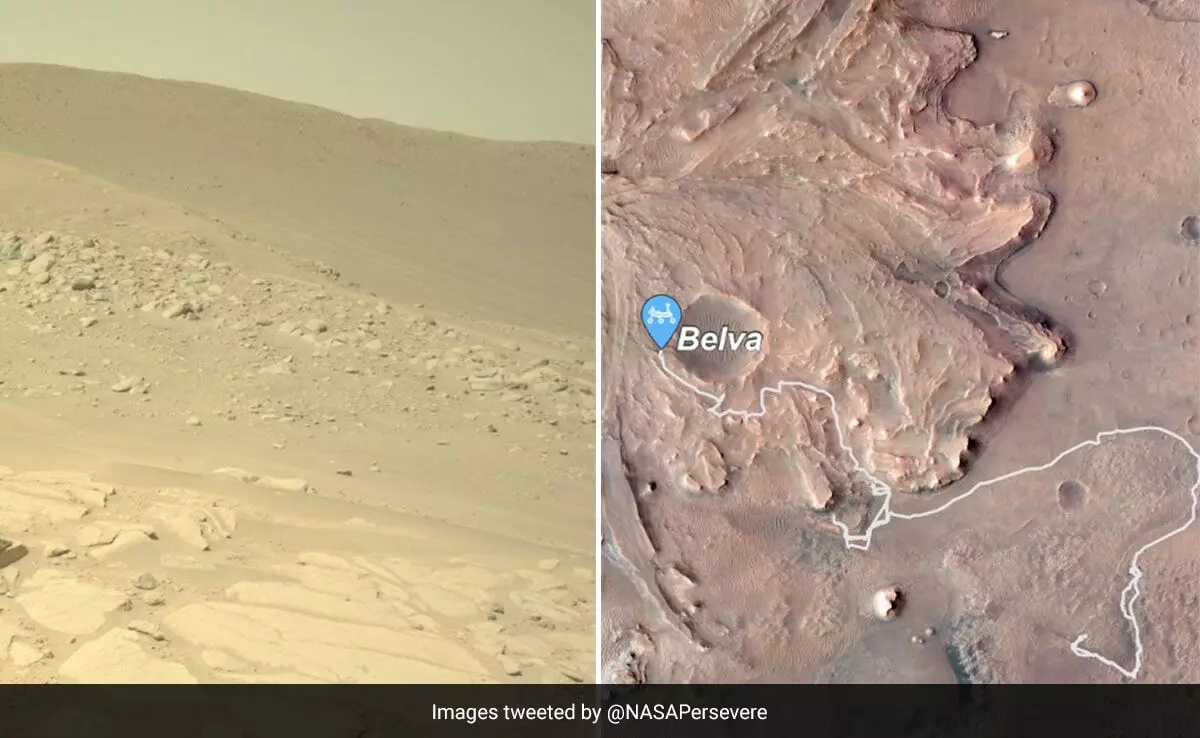
Stunning view of Belva Crater on Mars captured by NASA's Perseverance rover
text_fieldsSince it began exploring Mars a little more than two years ago, NASA's Perseverance rover has sent back some incredible pictures of the Red Planet. This time, the Perseverance rover's Mastcam-Z instrument took 152 images while looking deeply into Belva Crater, a large crater inside the much larger Jezero Crater.
NASA combined the photographs into an impressive mosaic and even made a video of it to share online. The pictures will assist the rover's scientific team gain a thorough understanding of Jezero's interior.
''Zooming in on Belva Crater. Places like this, where nature has done the excavating for you, can be great for getting a look at exposed rocks from under the surface. Hooray for meteorites,'' the video was captioned.
On April 22, Perseverance parked at the western edge of Belva Crater's rim on a light-toned rocky outcrop known as "Echo Creek," where it took pictures of the interior of the crater. The crater is about 0.6 miles (0.9 km) wide and exhibits numerous areas of exposed bedrock as well as regions where sedimentary layers are inclined sharply downward, NDTV reported.
The research team hypothesises that the massive stones in the foreground may be either piece of bedrock exposed by the meteorite impact or debris carried into the crater by the river system.
"Mars rover missions usually end up exploring bedrock in small, flat exposures in the immediate workspace of the rover. That's why our science team was so keen to image and study Belva. Impact craters can offer grand views and vertical cuts that provide important clues to the origin of these rocks with a perspective and at a scale that we don't usually experience,'' Katie Stack Morgan, deputy project scientist of the Perseverance mission, said in a statement.
A few days ago, NASA posted a picture of Mars that potentially show signs of a chaotic river. The river appeared to be deeper and running more quickly than previously found ancient streams. The river was one of many streams that ran through Jezero Crater. Notably, the rover has been studying this region ever since it landed more than two years ago in the hopes of one day finding evidence of ancient microbial life.






















